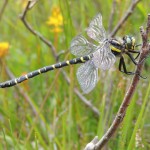10:00- 16:00hrs
With Xmas Craft Making Event.
Suitable for people of all ages, each session includes full tuition and all materials to enable you to make and take home traditional Christmas Decorations, using natural materials.
The Christmas Craft sessions will run from
11am to 12.30pm and from 1.30pm to 3pm.
The Christmas Craft Sessions cost £5.00, which includes all materials and instruction.
Please note Children under 16 are welcome, but must be accompanied by a parent or responsible adult.
There is also the usual Open Sunday opportunities.
Walk the reserve and spend time in the hides watching our
winter wild fowl and other seasonal visitors.
If you fancy some warmer wildlife watching, then why not use the viewing gallery
in the Centre, where you will also find: Crafts, Gifts, Second-hand book stall,
bird seed for sale and warming refreshments including mince pies and home-made cakes.
Family and friends welcome.
Click here for more details.
MKNHS is not responsible for the content of external Internet sites. You should check details of any events listed on external sites with the organisers.


















 NNBW takes place each year from 14-21 February, and after more than 15 years it is now an established part of the ornithological calendar.
NNBW takes place each year from 14-21 February, and after more than 15 years it is now an established part of the ornithological calendar.


 It’s unheard-of: after the warmest and wettest December on record, more than 600 species of British wildflowers were in bloom on New Year’s Day 2016, a major survey has shown. In a normal cold winter, botanists would expect no more than 20 to 30 types of wild plants to be in flower in the British Isles at the year’s end – species such as daisy, dandelion and gorse.
It’s unheard-of: after the warmest and wettest December on record, more than 600 species of British wildflowers were in bloom on New Year’s Day 2016, a major survey has shown. In a normal cold winter, botanists would expect no more than 20 to 30 types of wild plants to be in flower in the British Isles at the year’s end – species such as daisy, dandelion and gorse.

















 The Woodland Trust has recently publicised the work they are doing to fight the threat of disease in our woodlands.
The Woodland Trust has recently publicised the work they are doing to fight the threat of disease in our woodlands. 


 It has been known for decades that some birds are able to sense the Earth’s magnetic field and set their direction as if following a compass heading, which is an extremely useful ability for birds migrating long distances. The ability is believed to be linked to the availability of light and it is thought that specialized molecules in the birds’ retinas allow them to literally see the magnetic fields, which appear as patterns of light and shade superimposed over the regular image from light. Now a new study shows that the internal compass also depends on the birds having clear vision in their right eyes.
It has been known for decades that some birds are able to sense the Earth’s magnetic field and set their direction as if following a compass heading, which is an extremely useful ability for birds migrating long distances. The ability is believed to be linked to the availability of light and it is thought that specialized molecules in the birds’ retinas allow them to literally see the magnetic fields, which appear as patterns of light and shade superimposed over the regular image from light. Now a new study shows that the internal compass also depends on the birds having clear vision in their right eyes.

















